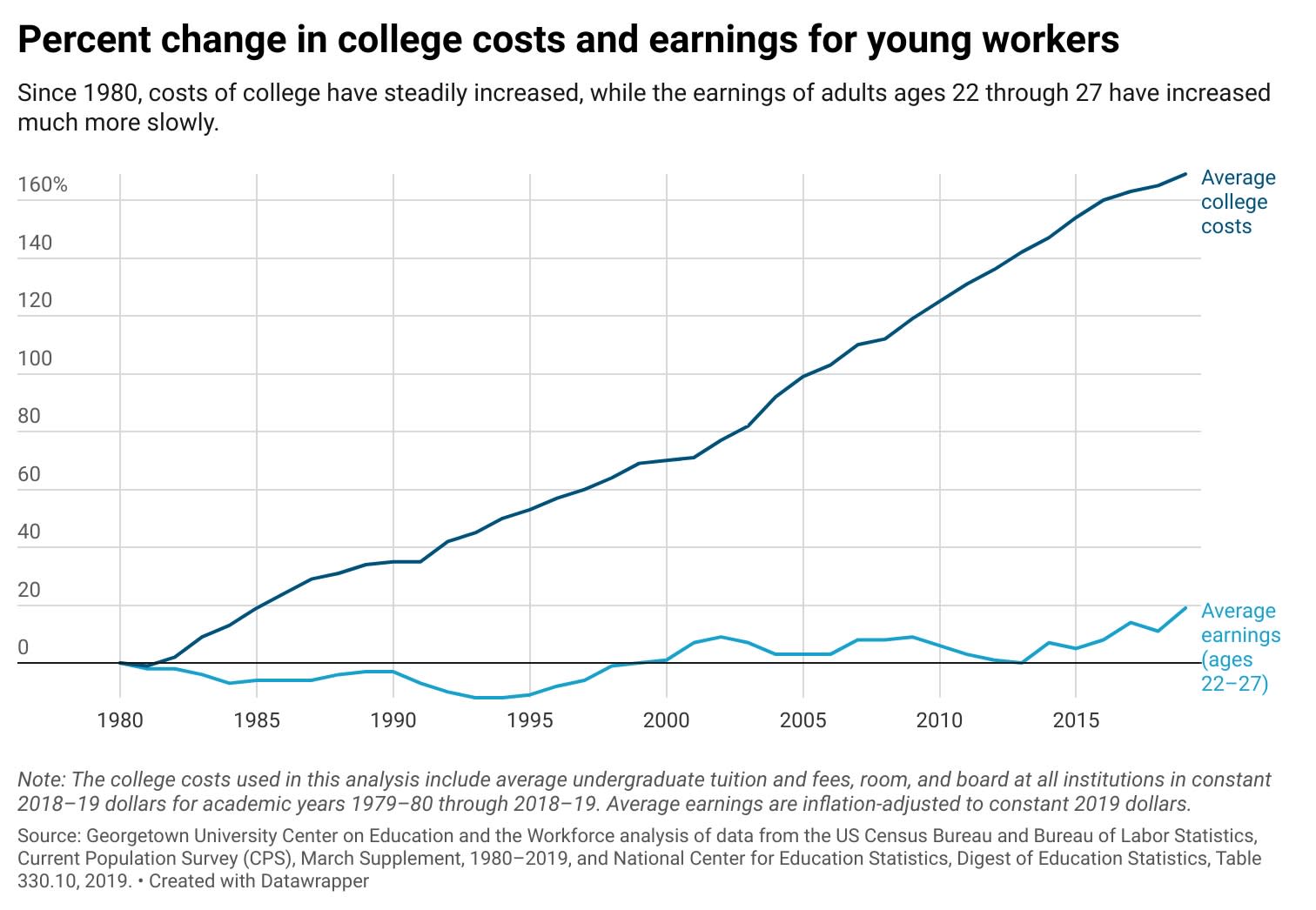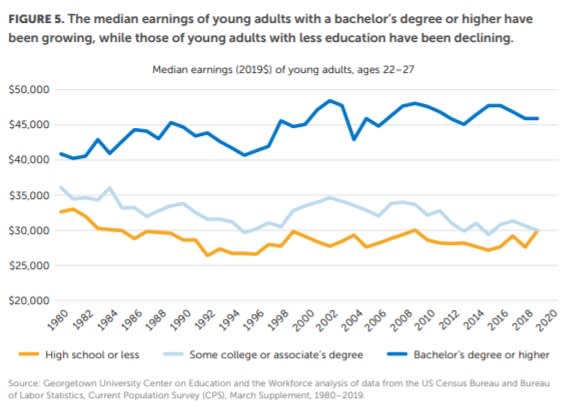News
Using Loan To Fund College Education Tactfully
September 6, 2021
November 15, 2021
Today, typical college costs (including tuition and fees, room and board, and allowances for books and supplies, transportation and other personal expenses) range from $27,330 for public in-state university students to $55,800 for private nonprofit college students. When scholarships and grants are taken into account, average net costs for tuition and fees at these kinds of schools are closer to $2,640 and $14,990, respectively.
Though the pandemic and recent increases in higher education funding may have slowed the speed of rising college costs, a recent report from Georgetown University highlights the growth in the gap between how much young workers make and how much they must pay to earn a college degree over the past several decades. The report, titled “If Not Now, When? The Urgent Need for an All-One-System Approach to Youth Policy,” breaks down seven trends that have made it difficult for workers to transition from education to the workforce since 1980.
“Postsecondary education policy has failed to keep higher education affordable even as formal education beyond high school has become more essential,” reads the report. “Today, two out of three jobs require postsecondary education and training, while three out of four jobs in the 1970s required a high school diploma or less. Yet while young people today need more education than ever to compete in the labor market, a college education is more expensive than in the past.”
According to the researchers’ analysis of U.S. Census, Bureau of Labor Statistics and National Center for Education Statistics data for the years 1980 to 2019, college costs have increased by 169% over the past four decades — while earnings for workers between the ages of 22 and 27 have increased by just 19%.
Included on page 13 of the report is a graph that captures this gulf:
 To be sure, wages for young workers of all levels of educational attainment have grown slowly over the past several decades. And though college costs have risen, workers with a bachelor’s degree have still fared best in the labor market.
To be sure, wages for young workers of all levels of educational attainment have grown slowly over the past several decades. And though college costs have risen, workers with a bachelor’s degree have still fared best in the labor market.The Georgetown report estimates that median earnings for young adults with a college degree hover near $45,000 while earnings for those without a college degree remain closer to $30,000.

The report also broadly critiques the United States’ “fragmented” system of education and workforce development.
“The evidence of our failure to help all youth make the long journey from early childhood to adult economic independence is plain. In the trajectory from kindergarten to a good job, the most talented disadvantaged youth do not fare nearly as well as the least talented advantaged youth,” reads the report. “It is far better to be born rich and white than smart and poor in America.”
In 2019, Georgetown researchers dug into this topic and found that poor kindergartners with good scores are less likely to graduate from high school, graduate from college or earn a high wage than their affluent peers with lower grades.
“When we track student test scores beginning in kindergarten, we find that children from families in the top quartile of family socioeconomic status (SES) who have low test scores have a 71% chance of being in the top half of socioeconomic status by their late 20s,” they write in 2021. “However, children from families in the bottom SES quartile but with top test scores have only a 31% chance of being in the top half of SES by their late 20s, and the numbers are even worse for talented children from low-income racial and ethnic minority households.”
To address these issues, the researchers suggest investing in early education, culturally responsive curriculum, work-based learning, free college for low-income students and career counseling.
“We haven’t connected the dots from early childhood, through K –12 and postsecondary education, to careers,” says Anthony P. Carnevale, lead author and CEW director in a statement. “We need an all-one-system approach that facilitates smooth transitions on the pathway from youth dependence to adult independence.”
SOURCE: CNBC
IMAGE SOURCE: PIXABAY